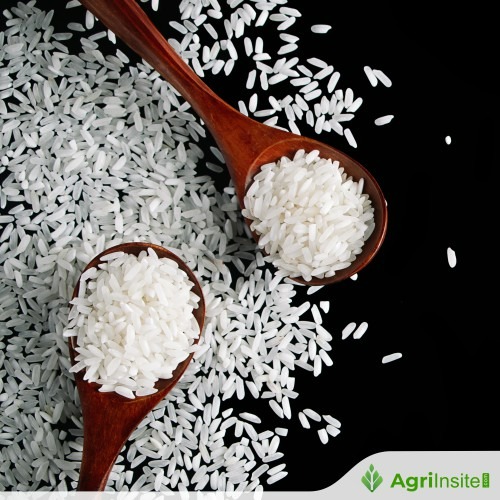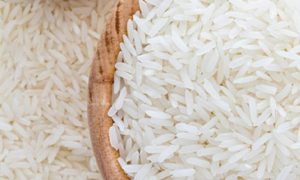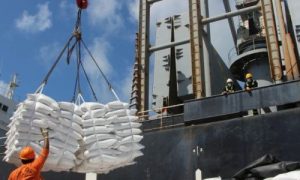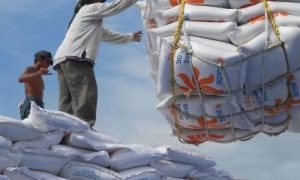Platts parboiled 5% rice spread narrows between Thailand and India

The price gap between Thai and Indian Parboiled 5% rice has narrowed to $17/mt, increasing Thai rice’s competitiveness. Indian prices are under pressure due to weak demand and competition from Pakistan. With new Thai crops arriving in March and Indian stocks high, buyers may shift to Thai rice. Indian prices may drop further to $350-$360/mt FOB.
Platts Parboiled 5% (PB) rice price spread between Thailand and India has narrowed to just $17/mt, signaling a potential shift in buyer preference toward Thai-origin rice, sources told S&P Global Commodity Insights.
The differential has steadily declined over the past few months, making Thailand a more competitive sourcing option for importers, while also putting additional pressure on Indian PB 5% prices due to weak demand.
Platts assessed Thai Parboiled 5% STX rice at $417/mt FOB Feb. 20, down $47/mt on the month, while India was assessed at $400/mt FOB, down $39/mt on the month.
India imposed a 20% export duty on PB 5% on Aug. 25, 2023, to monitor the price increase of this essential staple and ensure sufficient availability in the domestic market.
According to market sources, while the spread before export duty maintained its level at “$50-$60/mt”, it increased substantially a week after the duty was implemented.
The spread between Indian PB 5% and Thai PB 5% was at $100/mt on Sept. 1, 2023, when Platts assessed Indian PB 5% at $529/mt FOB and Thai PB 5% at $629/mt FOB.
However, India removed the 20% export duty on Oct. 22, 2024, propelled by swelling granaries.
Thai vs. Indian PB rice buyer preferences
If the spread between the two countries keeps narrowing, buyers will likely favor Thai rice over Indian rice, even at a slightly higher price.
Wanniwat Kitireanglarp, deputy secretary general of the Thai Rice Exporters Association, said, “Yes, buyers will shift. However, India’s prices will eventually decline, and at the same time, the Thai market is so sensitive that it will move up. Currently, indications for Thai parboiled 5% STX are already at $425-$430/mt FOB.”
Another Thai source noted that for spot deliveries within two weeks, Thai parboiled 5% offers are not at $417/mt but rather around $428-$430/mt FOB. A four-week delivery aligns more closely with current price assessments. Given the current volatility in the market, a shipment range of 15-45 days is too broad to capture price fluctuations accurately. Buyers will be buying a higher ratio of Thai. The shift has not yet happened but surely will happen, as has happened in the past.
Furthermore, the imminent arrival of fresh Thai crops in March could provide an opportunity to meet this demand effectively, ensuring that buyers remain attracted to Thai rice.
A Bangkok-based seller said Thai parboiled rice prices will likely rise soon, as $417/mt FOB is unsustainable. However, if the price spread between Thai and Indian rice remains narrow, Thai-origin rice will continue to attract buyers. Currently, there is strong demand from South Africa and Yemen. Looking ahead, fresh Thai crops are expected to enter the market around March.
Indian PB 5% rice price under pressure
Platts-assessed Indian PB 5% STX slumped to nearly a two-year low of $400/mt FOB on Feb. 20, $4/mt down from June 23, 2023.
While demand for Indian PB 5% remained subdued due to oversupply in destination markets, the falling Thai PB 5% prices have pressured Indian PB 5% FOB Levels.
“If Thai prices remain attractive, it is likely buyers would prefer that as the quality is premium to India,” an Indian miller/exporter said, anticipating that Indian PB 5% prices are likely to come down pre-export duty levels at $350-$360/mt FOB.
Indian market participants anticipate price declines, with some anticipating prices “to bottom out” at $390/mt levels in March and others expecting a “slight decline but not much downside.”
In addition, dropping Pakistani PB 5% FOB levels has further increased the pressure. Platts assessed Pakistani PB 5% at $404/mt FOB Feb. 20, only a $4/mt premium to Indian PB 5%.
“[Indian] PB should go down,” another India-based exporter said, adding that despite the low supply of Pakistani PB 5%, the competitive Pakistani prices will pressure Indian PB 5%.
However, Pakistani exporters don’t anticipate buyers purchasing PB rice from Pakistan as it doesn’t have a volume advantage like India. They noted that buyers would stick to Thailand and India.
While demand remains thin, rice supply in India remains high.
According to Food Corporation of India data, the central pool has 34 million mt of milled rice and 50.147 million mt of unmilled paddy. The stock is against the buffer of 13.58 MT for April 1.
Summer crop for 2025 sowing has also begun. According to the Ministry of Agriculture & Farmers Welfare’s latest data, paddy sowing for the summer crop as of Feb. 14 was at 1.41 million hectares, out of the total paddy average coverage area of 3.07 million hectares. This indicates that 46% of the paddy area for the summer season 2024-25 has been sown.
To read more about Rice News continue reading Agriinsite.com
Source : S&P Global














